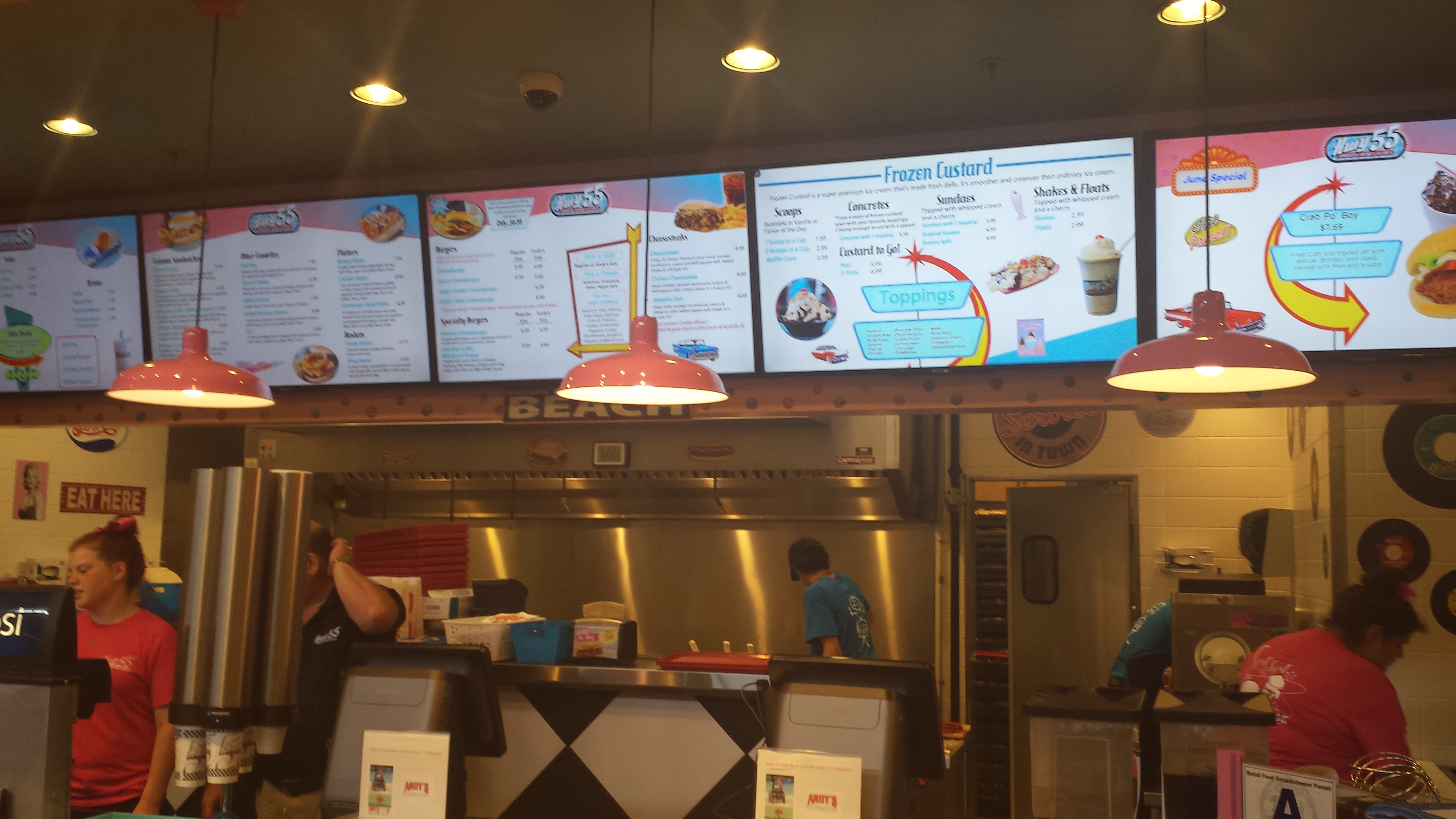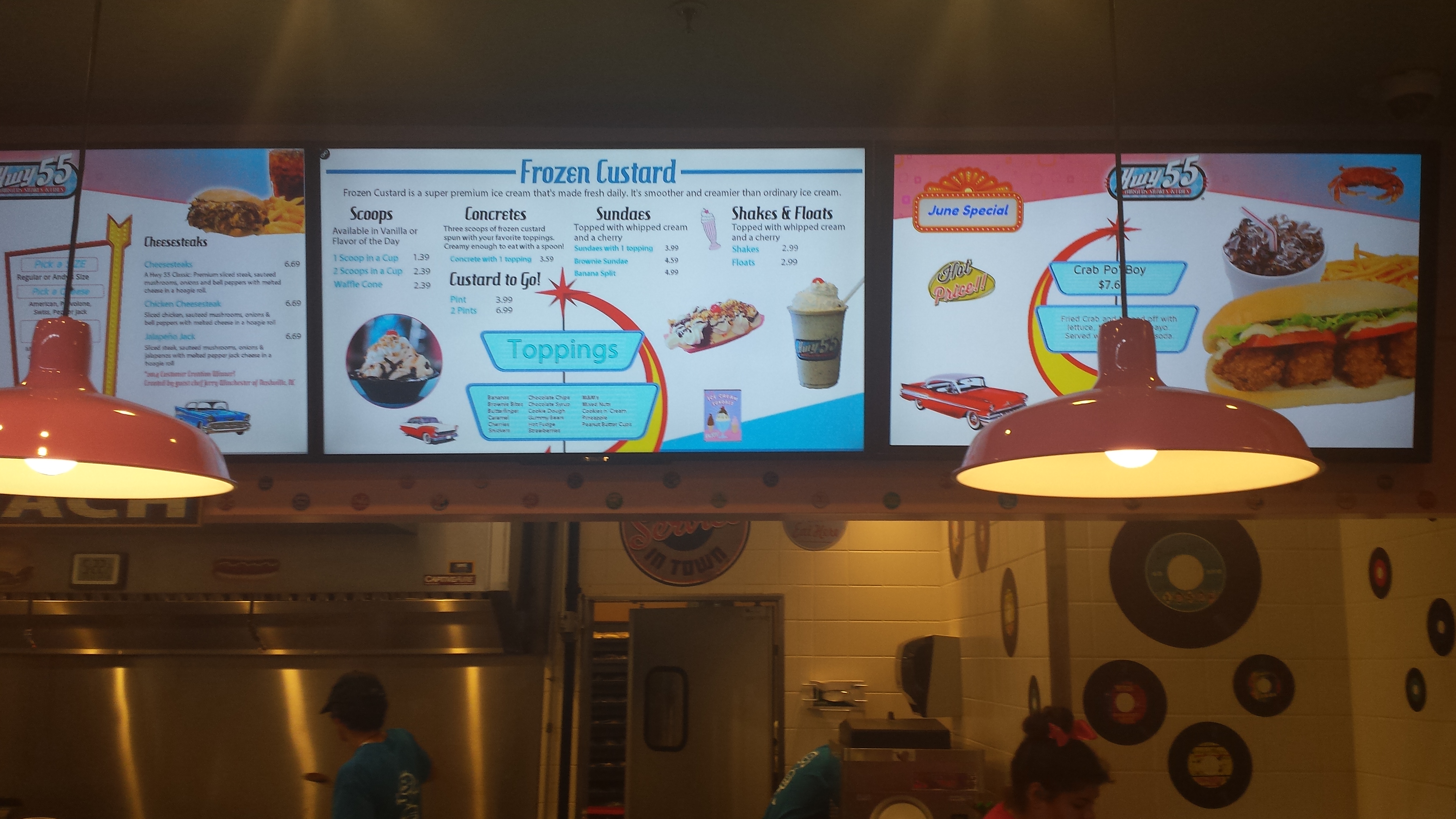What is Digital Signage?
Digital signage is a form of out-of-home communication advertising content and messages which are displayed on dynamic digital signs (e.g. large LCD / Plasma screens) with a common goal of delivering targeted messages. It allows you to reach your audience like never before by using dynamic video feeds, pre-defined widgets, social media campaigns, and news feeds.
Recent technological changes have eliminated the need for expensive legacy systems where cloud computing architectures provide the signage content management service via a Web-Portal.
Where is it used?
Digital Signage can help you deliver dynamic visual messages to optimize your customers’ experience while driving sales. Latest signage management systems offered over a SAAS platform, allow remote access from virtually anywhere, anyplace via a standard browser.
These state-of-the-art signage systems are being used worldwide in a variety of markets and applications ranging from restaurant signage systems, menu boards, advertising networks, announcement portals, point-of-purchase, employee training, customer communication to digital video showcases and alert systems.
Why is it used?
Digital Signage eliminates the cost of printed, traditional sign boards and informational displays. It has proven to be a better alternative to static signs, posters and billboards in virtually all industry verticals. Digital Signage technology is flexible and versatile- start with one digital sign and expand the network as per budgets and requirements.
With features including versatile media support and sophisticated data integration, digital signage systems offer a flexible solution designed to enhance diverse communication objectives of companies in a variety of market segments.
How does it work?
Digital Signage is a combination of four key components: a) Display (LCD TV or a Monitor), b) Signage Controller (Device), c) Content management software (CMS), and d) Content. The signage controller device is mounted behind the LCD monitor. The device is connected to the display via a video cable (HDMI, Component, DVI or VGA) and to the network via a Cat5 cable (or wireless).
Once networked the device communicates with the content management software. A user can login to the web-server application, upload content (media files) and setup playlists and schedules for playback.
Here is one of our satisfied clients that contracted us to do their digital signage:
Hwy 55 Burgers – Located in the Coastal Grand Mall in Myrtle Beach, SC in the Food Court. This was a pilot restaurant for the mall food court type of setting as the locations up to this point where menu based sit down settings.
Let Positive Media Group LLC help meet all your digital signage needs.




